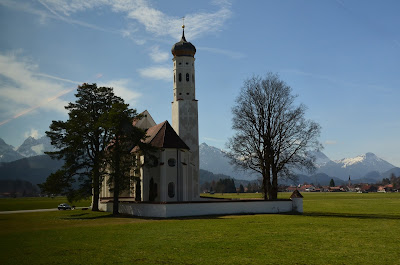I want to remind you that tomorrow is the First Friday of the month. Because tomorrow is the first Friday of
the Month, many Catholic parishes will have special Masses for the
First Friday Devotion.
Promises for those devoted to the Sacred Heart:
1. "I will give them all the graces necessary in their state of life."
2. "I will establish peace in their homes."
3. "I will comfort them in their afflictions."
4. "I will be their secure refuge during life, and above all in death."
5. "I will bestow a large blessing upon all their undertakings."
6. "Sinners shall find in My Heart the source and the infinite ocean of mercy."
7. "Tepid souls shall grow fervent."
8. "Fervent souls shall quickly mount to high perfection."
9. "I will bless every place where a picture of My Heart shall be set up and honored."
10. "I will give to priests the gift of touching the most hardened hearts."
11. "Those who shall promote this devotion shall have their names written in My Heart, never to be blotted out."
12. "I promise thee in the excessive mercy of My Heart that My all-powerful love will grant to all those who communicate on the First Friday in nine consecutive months, the grace of final penitence; they shall not die in My disgrace nor without receiving the Sacraments; My Divine heart shall be their safe refuge in this last moment."
Prayer of Reparation:
O Most Holy Trinity, Father, Son and Holy Spirit, I adore thee profoundly. I offer thee the most precious Body, Blood, Soul and Divinity of Jesus Christ, present in all the tabernacles of the world, in reparation for the outrages, sacrileges and indifferences by which He is offended. By the infinite merits of the Sacred Heart of Jesus, and the Immaculate Heart of Mary, I beg of thee the conversion of poor sinners.
Read more >>
"With foresight, the divine heart of Christ merited and ordered all the favors which we have received, disposing them for each of us in particular. How our hearts would be inflamed with love for so many favors! Consider that they were destined for us by the will of the Father, to be borne in the heart of the Savior, Who earned them for us by His sufferings, above all by His passion." - St. Francis de SalesBeginning on December 27, 1673, through 1675, Our Lord appeared to St. Margaret Mary Alacoque asking her to receive Him in Holy Communion on the first Friday of every month and to meditate on His passion from 11:00 PM to 12:00 midnight each Thursday. He also revealed to her twelve promises for all who are devoted to His Sacred Heart; he asked for a Feast of the Sacred Heart to be instituted in the liturgical calendar of the Church. Our Lord appeared to St. Margaret Mary Alacoque with twelve promises for those devoted to His Most Sacred Heart.
Promises for those devoted to the Sacred Heart:
1. "I will give them all the graces necessary in their state of life."
2. "I will establish peace in their homes."
3. "I will comfort them in their afflictions."
4. "I will be their secure refuge during life, and above all in death."
5. "I will bestow a large blessing upon all their undertakings."
6. "Sinners shall find in My Heart the source and the infinite ocean of mercy."
7. "Tepid souls shall grow fervent."
8. "Fervent souls shall quickly mount to high perfection."
9. "I will bless every place where a picture of My Heart shall be set up and honored."
10. "I will give to priests the gift of touching the most hardened hearts."
11. "Those who shall promote this devotion shall have their names written in My Heart, never to be blotted out."
12. "I promise thee in the excessive mercy of My Heart that My all-powerful love will grant to all those who communicate on the First Friday in nine consecutive months, the grace of final penitence; they shall not die in My disgrace nor without receiving the Sacraments; My Divine heart shall be their safe refuge in this last moment."
Prayer of Reparation:
O Most Holy Trinity, Father, Son and Holy Spirit, I adore thee profoundly. I offer thee the most precious Body, Blood, Soul and Divinity of Jesus Christ, present in all the tabernacles of the world, in reparation for the outrages, sacrileges and indifferences by which He is offended. By the infinite merits of the Sacred Heart of Jesus, and the Immaculate Heart of Mary, I beg of thee the conversion of poor sinners.


.jpg)






































